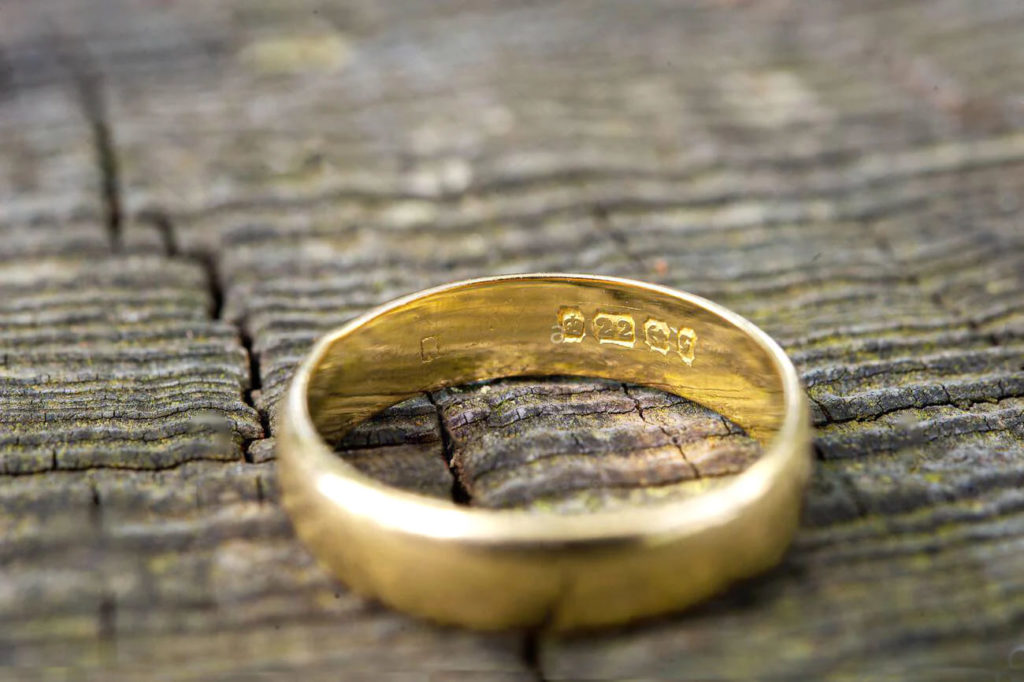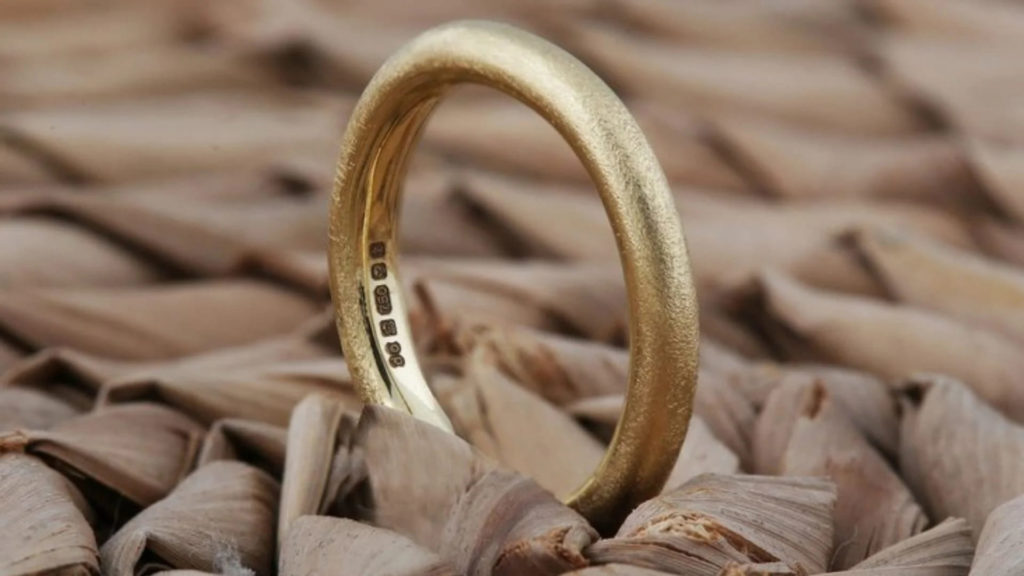When purchasing jewelry, whether for personal use or investment purposes, knowing the value of the materials used is essential. One of the most reliable ways to verify the authenticity and purity of precious metals in jewelry is through hallmarks. Hallmarks are small stamps or engravings found on jewelry pieces that provide important information about the metal’s quality, the manufacturer, and its origin.
In this blog post, we will guide you through the process of identifying precious metals with jewelry hallmarks, explaining what they mean, how to read them, and why they matter when it comes to buying, selling, and maintaining high-value jewelry.
What Are Jewelry Hallmarks?
A hallmark is a stamp or engraving found on jewelry that serves as an official mark of authenticity. Hallmarks can be found on various precious metals, including gold, silver, platinum, and palladium, and they typically indicate several important factors, such as:
- The purity of the metal: This shows the proportion of precious metal in the jewelry piece.
- The manufacturer’s mark: Identifies the brand or maker of the jewelry.
- The assay office mark: Indicates the official assay office that verified the metal’s purity.
- The country of origin: Shows where the jewelry was made or assayed.
By understanding how to read and interpret these hallmarks, you can ensure that the jewelry you buy or sell is genuine and meets the appropriate standards.
The Importance of Hallmarks in Jewelry

Hallmarks provide multiple benefits when it comes to purchasing and selling jewelry. Some of the key reasons hallmarks are important include:
1. Ensuring Authenticity
Hallmarks verify that the jewelry is made from the materials it claims. For instance, a piece marked with “750” signifies that it is made from 75% pure gold, which reassures the buyer that they are purchasing a legitimate item.
2. Confirming Quality
When you purchase high-value jewelry, such as gold rings or platinum necklaces, you want to ensure that the metal’s purity is genuine. Hallmarks confirm the quality of the precious metals and can help you assess the value of the piece.
3. Legal Protection
In many countries, the law requires jewelry made from precious metals to carry hallmarks. This ensures that the items sold to consumers meet the standards for purity and quality, protecting both buyers and sellers.
4. Increasing Resale Value
Jewelry with clear hallmarks can fetch a higher price on the resale market. Collectors and buyers are more likely to trust pieces that carry recognized hallmarks, especially if they come from reputable makers or known assay offices.
Understanding Hallmark Symbols
Jewelry hallmarks typically consist of a combination of symbols and letters that convey specific information. Here are some of the most common hallmark symbols and their meanings:
1. Metal Purity Mark
The purity mark indicates the percentage of precious metal in the jewelry. For example:
- Gold: The purity of gold is typically indicated in karats (K) or as a decimal. For instance:
- 24K: 100% pure gold.
- 22K: 91.67% pure gold.
- 18K: 75% pure gold.
- 14K: 58.33% pure gold.
- 10K: 41.67% pure gold.
- Gold-filled: Gold is bonded to a base metal, usually at least 10K.
- Silver: Silver purity is usually indicated by a number like 925, which indicates 92.5% pure silver (known as sterling silver).
- 800: 80% pure silver (commonly used in some European countries).
- 999: 99.9% pure silver (usually considered fine silver).
- Platinum: Platinum is usually stamped with 950, meaning it contains 95% pure platinum, or sometimes 900, indicating 90% purity.
2. Manufacturer’s Mark
A manufacturer’s mark (also called a maker’s mark) is a unique symbol or set of initials used to identify the jewelry maker or designer. This mark can be helpful when researching the history of a piece or determining its value. The manufacturer’s mark can also tell you whether the piece was handcrafted by a well-known jeweler or mass-produced by a jewelry company.
3. Assay Office Mark
An assay office is a government-authorized facility where the purity of precious metals is tested. The assay office mark ensures that the metal has been tested and certified by an official organization. Each assay office has its own symbol, which is stamped alongside the metal purity mark. For example:
- Anchor: The Birmingham Assay Office in the United Kingdom.
- Leopard’s Head: The London Assay Office in the UK.
- Crown: The Sheffield Assay Office in the UK.
4. Country of Origin
Some hallmarks also feature a symbol or code that identifies the country in which the jewelry was made or assayed. For example:
- France: French hallmarks typically include a rooster symbol for gold and a crab for silver.
- Italy: Italy uses an official system of purity and maker’s marks, which are often found on the inside of rings and bracelets.
- India: In India, hallmarks are controlled by the Bureau of Indian Standards (BIS), which uses the BIS logo along with the metal’s purity stamp (e.g., 916 for 22K gold).
5. Date or Year Mark
Some jewelry pieces, especially antiques, may have a date or year mark that indicates when the piece was made. This can be valuable for collectors who want to assess the age of a piece. Some assay offices or manufacturers use a specific symbol or letter to denote the year, similar to how coins are marked with the year of minting.
How to Find Hallmarks on Jewelry
Hallmarks are typically stamped on areas of jewelry that are not immediately visible, so it’s important to know where to look. Common locations for hallmarks include:
- Rings: Inside the band, where the hallmark is less likely to be worn away.
- Necklaces and Pendants: On the clasp or the back of the pendant.
- Bracelets: On the inside of the bangle or bracelet.
- Earrings: On the post or inside the hoop.
- Watches: On the case or band.
To read the hallmark, you may need a magnifying glass, especially for intricate stamps. Hallmarks can be very small, but they contain valuable information regarding the authenticity and quality of the piece.
Why Hallmarks Matter for Buyers and Sellers
Hallmarks offer transparency and help establish the authenticity and value of jewelry. For buyers, a hallmark ensures that the piece you are purchasing is made from genuine, high-quality materials. For sellers, hallmarks provide assurance to potential buyers, building trust in the product. If you plan to resell or trade your jewelry, a hallmark can also make your piece more valuable and easier to sell.
Read Also : Jewellery Essentials Every Woman Should Own
Conclusion
Hallmarks play a crucial role in identifying and verifying precious metals in jewelry. These small but important stamps serve as a guarantee of authenticity, ensuring that the jewelry is made from the stated materials and meets established standards for quality and purity. Whether you’re buying, selling, or appraising jewelry, understanding how to read and interpret hallmarks is essential.
By familiarizing yourself with the symbols and their meanings, you can make more informed decisions when purchasing jewelry and ensure that you’re getting the true value for your money. So next time you’re looking at a piece of jewelry, take a moment to inspect the hallmark—it’s the key to understanding what you’re really buying.

